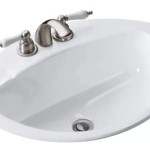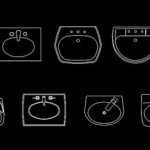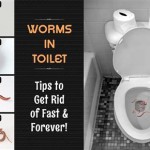What Are These Tiny Red Bugs In My Bathroom?
The discovery of tiny red bugs in a bathroom can be alarming. These creatures, barely visible to the naked eye, often congregate in damp areas, causing concern and prompting questions about their identity, potential harm, and methods of eradication. Identifying the specific type of bug is crucial for effective control. This article provides detailed information about common tiny red bugs found in bathrooms and offers strategies for managing their presence.
Identifying Common Tiny Red Bathroom Bugs
Several types of small, reddish arthropods can inhabit bathrooms. Accurate identification is paramount because control methods vary depending on the species involved. Some common culprits include: clover mites, spider mites, mold mites, and certain types of springtails. Each of these have distinct characteristics.
Clover Mites: Clover mites (Bryobia praetiosa) are not insects but rather arachnids, belonging to the same class as spiders. They are typically reddish-brown, although their color can vary depending on their diet. These mites are extremely small, about the size of a pinhead, and possess a distinctive pair of long front legs that they use as sensory organs. Clover mites are primarily plant feeders and thrive on lawns, gardens, and other vegetation. They are more likely to be observed in bathrooms near windows, as they accidentally wander indoors while searching for food or suitable egg-laying sites. These mites do not bite humans or cause structural damage. Their presence is primarily a nuisance due to their sheer numbers and reddish stains when crushed.
Spider Mites: Similar to clover mites, spider mites are also arachnids within the family Tetranychidae and are plant feeders with the ability to infest indoor plants. Spider mites are tiny, often reddish, and can create fine webbing on plants, which is a key identifying characteristic. While less common in bathrooms than clover mites, they can appear if houseplants are present. These mites suck sap from plants, causing characteristic stippling or discoloration on leaves. While they do not directly harm humans or structures, their presence indicates an infestation on nearby plants.
Mold Mites: Mold mites, also known as grain mites or flour mites (various species in the Acaridae family), are tiny, white or tan arachnids that feed on mold and fungi. They are often found in damp environments, such as bathrooms, where mold growth is prevalent. These mites are extremely small, making them difficult to see without magnification. They proliferate rapidly in areas with high humidity and organic matter. While mold mites do not bite, their presence is indicative of an underlying mold problem, which can be an allergen trigger for some individuals. Heavy infestations can also lead to the development of allergic reactions in sensitive individuals, particularly respiratory issues.
Springtails: While not always red, some species of springtails (Order Collembola) can appear reddish or brownish. These are tiny, wingless arthropods that thrive in damp environments. Springtails are characterized by their ability to jump considerable distances using a furcula, a forked appendage located on their abdomen. They feed on decaying organic matter, fungi, and algae, making bathrooms an ideal habitat when coupled with areas of high humidity. Springtails are generally harmless to humans and do not bite or transmit diseases. However, their presence can be a nuisance, particularly in large numbers and can indicate potential moisture problems.
Distinguishing between these arthropods requires close observation and, in some cases, magnification. The presence of webbing indicates spider mites, while the ability to jump is characteristic of springtails. The presence of long front legs is a key feature of clover mites, and areas with mold and humidity will likely house mites of the mold variety. Identifying the specific bug is the first step in formulating an effective management strategy.
Understanding the Causes of Bathroom Bug Infestations
The presence of tiny red bugs in a bathroom is typically attributable to environmental factors that create favorable conditions for their survival and reproduction. These factors primarily revolve around moisture, humidity, and the availability of food sources.
Moisture and Humidity: Bathrooms are inherently humid environments due to regular usage of showers, baths, and sinks. High humidity levels provide the moisture that many small arthropods require to survive, including mold mites, springtails, and even clover mites seeking refuge. Leaky pipes, inadequate ventilation, and condensation contribute to elevated moisture levels. Mold and mildew thrive under these conditions, providing a food source for mold mites and other organisms. Proper ventilation, such as using exhaust fans during and after showers, is essential in reducing humidity and preventing infestations.
Food Sources: Tiny red bugs feed on various substances, depending on the species. Clover mites and spider mites are primarily plant feeders and may be attracted to houseplants or outdoor vegetation near windows. Mold mites feed on mold and fungi that grow in damp areas. Springtails consume decaying organic matter, algae, and fungi. Bathrooms provide ample food sources with humidity, mildew growth on tile grout, dust accumulation behind toilets, and other areas that can sustain these organisms. Regularly cleaning bathrooms to eliminate food sources is an important step in preventing infestations.
Entry Points: Tiny red bugs can enter bathrooms through various entry points. Clover mites often enter through cracks and crevices in walls, windowsills, and doorframes, especially in the spring and fall when seeking indoor shelter. Springtails and mold mites can enter through drains, unsealed pipes, or gaps in flooring and baseboards. Sealing potential entry points with caulk or weather stripping can help prevent these bugs from entering buildings. Ensuring that windows and doors are properly sealed is also crucial. Screening windows can prevent the entry of clover mites and other outdoor pests.
Outdoor Vegetation: Homes surrounded by lush vegetation are more prone to clover mite infestations. These mites feed on grass, weeds, and other plants near the foundation of the building. Overhanging branches and dense ground cover can provide pathways for mites to enter the house. Creating a vegetation-free zone around the foundation can deter mites from entering. This can involve replacing grass or ground cover with gravel, mulch, or other non-vegetative materials. Regular lawn maintenance, including mowing and weed control, can also help reduce clover mite populations around the home.
Effective Management and Prevention Strategies
Managing and preventing tiny red bug infestations in bathrooms involves a multifaceted approach that combines environmental control, sanitation, and, if necessary, targeted treatments. Emphasizing preventative measures is often the most effective long-term strategy.
Moisture Control: Reducing moisture and humidity is essential for preventing infestations. Using exhaust fans during and after showers and baths helps remove excess moisture from the air. Repairing leaky pipes and faucets prevents water from accumulating in damp areas. Drying wet surfaces, such as shower walls and floors, after each use can also help reduce humidity. Dehumidifiers can be used in bathrooms with persistent humidity problems. Ensuring proper ventilation throughout the bathroom is crucial for maintaining a dry environment.
Sanitation Practices: Regular cleaning and sanitation are vital for eliminating food sources. Cleaning bathroom surfaces with disinfectant cleaners removes mold, mildew, and other organic matter that attract bugs. Pay particular attention to areas prone to mold growth like tile grout, shower curtains, and under sinks. Regularly cleaning drains with drain cleaner or a mixture of baking soda and vinegar can prevent the buildup of organic matter. Vacuuming and sweeping regularly removes dust, debris, and dead bugs. Keeping the bathroom tidy and clutter-free minimizes hiding places for bugs.
Sealing Entry Points: Sealing cracks and crevices in walls, windowsills, and doorframes prevents bugs from entering the bathroom. Applying caulk around pipes, fixtures, and other openings can block potential entry points. Weather stripping around doors and windows creates a barrier that prevents bugs from entering. Inspecting and repairing damaged screens on windows and doors ensures they are bug-proof. Filling any gaps or holes in flooring or baseboards prevents bugs from hiding and multiplying.
Plant Management: If houseplants are present in the bathroom, inspect them regularly for signs of spider mites or other pests. Isolate infested plants to prevent the pests from spreading to other areas. Treat infested plants with insecticidal soap or neem oil according to label instructions. Consider removing plants from the bathroom if they are a persistent source of pest infestations. Avoid overwatering plants, as this can create a damp environment that attracts pests. Cleaning plant leaves regularly can remove dust and debris that pests may feed on.
Professional Assistance: In severe or persistent infestations, consulting with a professional pest control service is recommended. Pest control professionals can accurately identify the type of bug and recommend appropriate treatment strategies. They also have access to specialized equipment and insecticides that are not available to the general public. A pest management professional can conduct a thorough inspection of the bathroom and surrounding areas to identify the source of the infestation.

Clover Mites Keep Them Out Of Your House Croach Pest Control

Tiny Red Bugs Who Is The Culprit

Tiny Red Bugs Clover Mites Identification Removal Prevention

Blog Where Are All These Tiny Red Clover Mites Coming From

Mildew Feeding Insects In The Home City

Urban Wildlife Guide A Beetle In The Bathtub

Bathroom Bugs Identification 15 You Ll See In A

These Little Red Bug Will Come Out By The Billions Starting Soon This Spring Pestcontrol Clovermites

Masses Of Black Mites With Red Legs Clover The Backyard Arthropod Project

Bathroom Bugs Identification Guide How To Get Rid Of Each Type A Z Animals







